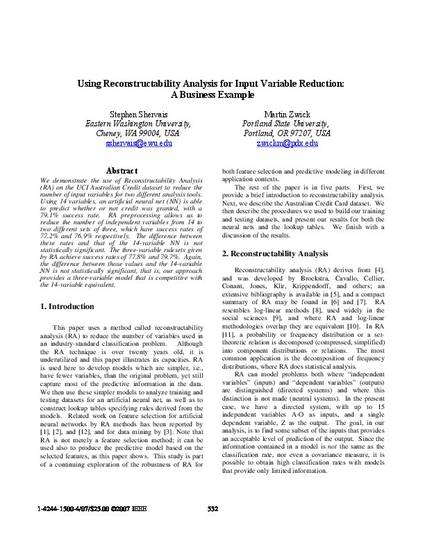
Article
Using Reconstructability Analysis for Input Variable Reduction: A Business Example
IEEE
(2007)
Abstract
We demonstrate the use of Reconstructability Analysis (RA) on the UCI Australian Credit dataset to reduce the
number of input variables for two different analysis tools. Using 14 variables, an artificial neural net (NN) is able
to predict whether or not credit was granted, with a 79.1% success rate. RA preprocessing allows us to
reduce the number of independent variables from 14 to two different sets of three, which have success rates of
77.2% and 76.9% respectively. The difference between these rates and that of the 14-variable NN is not
statistically significant. The three-variable rulesets given by RA achieve success rates of 77.8% and 79.7%. Again, the difference between those values and the 14-variable NN is not statistically significant, that is, our approach provides a three-variable model that is competitive with the 14-variable equivalent.
Keywords
- dimensionality reduction,
- probabilistic graphical models,
- Reconstructability Analysis,
- neural networks
Disciplines
Publication Date
2007
Publisher Statement
1-4244-1500-4/07/$25.00 ©2007 IEEE
Citation Information
Martin Zwick. "Using Reconstructability Analysis for Input Variable Reduction: A Business Example" IEEE (2007) Available at: http://works.bepress.com/martin_zwick/109/
